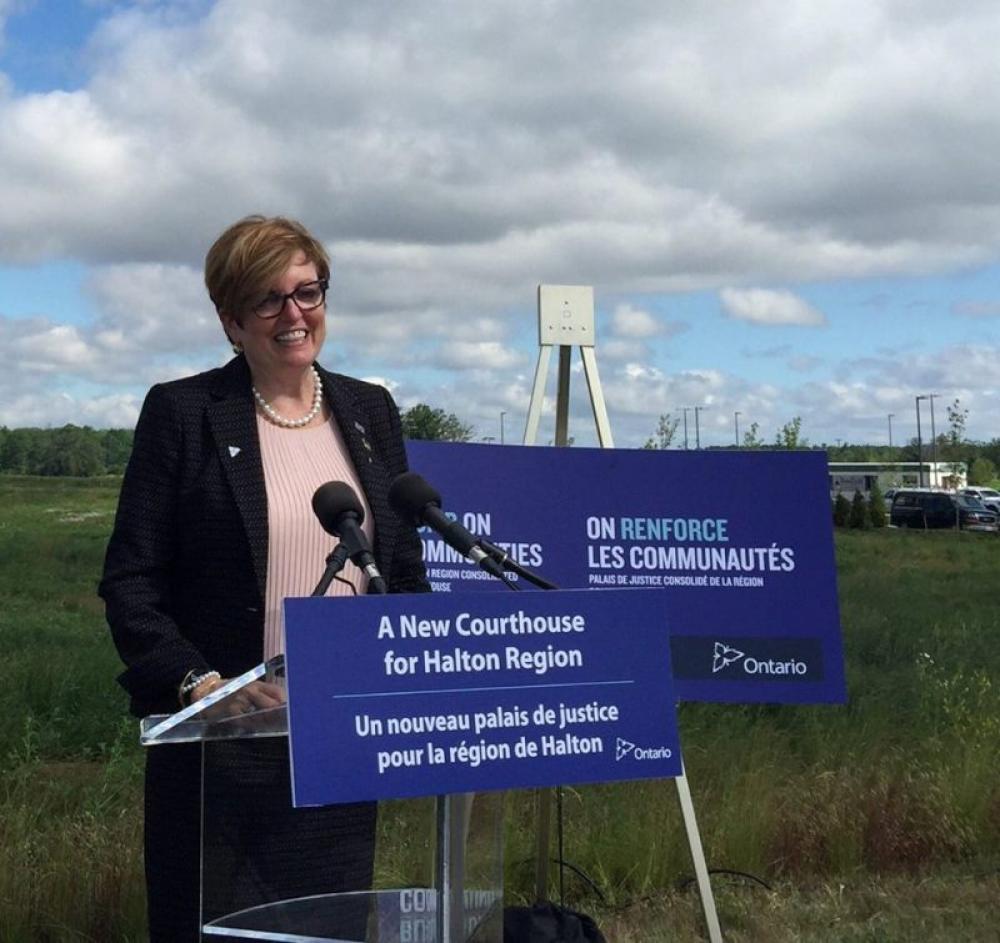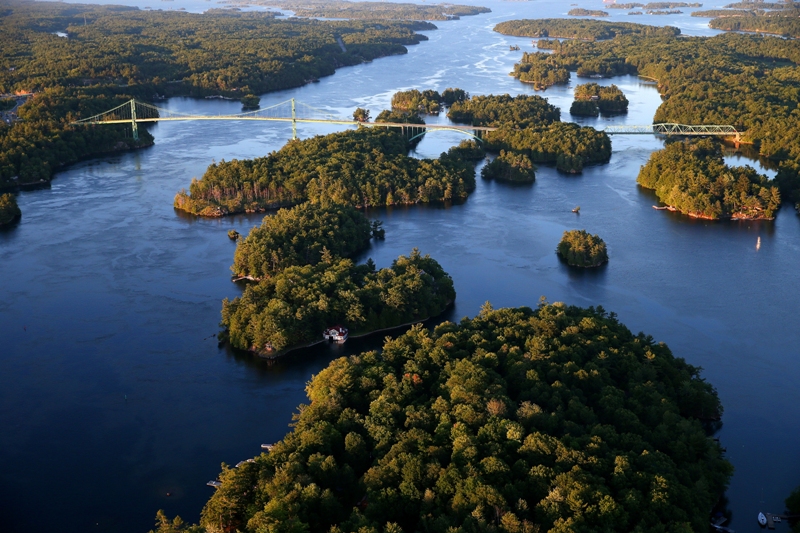Just Earth News | @justearthnews | 25 Oct 2017, 04:19 am Print

Tell us a bit about yourself. What made you join politics?
The tragic death of my husband, OPP Sergeant Greg Stobbart, in 2006, who was killed while cycling, when he was off duty, by a careless driver, led me to a different direction in a journey to public life. I began a campaign to improve road safety in Ontario.
In 2014 I was elected to the Ontario legislature as MPP for Burlington. After serving as Parliamentary Assistant to the Minister of Natural Resources and Forestry, I was appointed as the Minister of Tourism, Culture and Sport on June 13, 2016.
How would you describe your current political career?
In the 10 months since assuming the Tourism, Culture and Sport portfolio, I have had the opportunity to travel the province to meet with artists, arts workers, librarians and heritage advocates, theatres and galleries, studios and on to film sets. And we have engaged in some wonderful conversations about Ontario’s thriving sectors.
Could you briefly tell us about your strategies for tourism, culture and sports.
Tourism strategy maximizes the growth and competitiveness of Ontario’s tourism sector and enhances partnerships. It also includes creating economic opportunities for tourism and investment through the revitalization of Ontario Place (the iconic waterfront location in Toronto for live music, festivals, events and more). We built regional tourism model which supports enhanced partnerships, product development, investment and workforce development. We were able to support over 200 festivals and events through the Celebrate Ontario program.
The cultural strategy outlines a number of action items and comprises a lot of sectors like libraries, museums, archives, television sectors and how we work with different agencies like Ontario Arts Council. We fund several cultural and heritage entities and they also have a huge multicultural section and address business and First Nations Culture. Our cultural strategy is somewhat unique in the country and I am happy to say that this strategy is being followed by Quebec.
The Ministry works collaboratively with the sport and recreation sector to promote, support, and increase opportunities for all Ontarians to participate in sport and recreation, from playground to podium.
For the first time in Ontario you did a cultural strategy that allowed you to look at all of the industries within the culture sector. Elaborate.
Our cultural strategy comprises a number of sectors like libraries, museums, archives, television sectors, movie sectors and how we work with different agencies like Ontario Arts Council. We fund several cultural and heritage entities and they also have a huge multicultural section and address business and First Nations Culture. Our cultural strategy is somewhat unique in the country and I am happy to say that this strategy is being followed by Quebec. Based on public feedback, Ontario’s first Culture Strategy focuses on four key goals: to promote cultural engagement and inclusion; strengthen culture in communities; fuel the creative economy; promote the value of the arts throughout government. The Ontario Music Fund program is investing $15 million annually to sustain growth in the music industry.
We do have a very robust infrastructure of libraries and have announced an increase of 3 million dollars for libraries as well as for First Nations. We do a lot of work with libraries. Ontario is investing $3 million through the Improving Library Digital Services fund and will support up to 307 libraries and library organizations across the province. This includes $1 million for rural, remote and First Nation public libraries through Budget Talks
Minister McMahon, Canada has been very welcoming, and passionate about Ice-Hockey and has been historically playing well in Ice-Hockey. But it hasn't been able to maintain the same intensity in other popular sports such as football/soccer and cricket. Why do you think this is the case?
There is a reason for that. Hockey had been our national sport for a long time. There is a historic context to that. That is why it is in our DNA. It started at the community level and it has been fostered as part of our culture and deeply embedded specially in places liked Quebec for example. Canada is a winter country. We do much better in winter Olympics by and large. We have swimming programs and other programs second to none. But we are a winter nation and Ice-hockey is very much in vogue. Another reason is that people who grow up in rural regions spent time outside. Hockey used to require very little equipment. Now it is very fancy. Soccer is also becoming very popular in Canada. In my community alone over 5,000 children play soccer. One of the reasons that soccer is growing in popularity is because it does not require you to learn other than run up and down the field and kicking a ball. Cricket has not been able to keep pace with Ice-hockey because Cricket is not indigenous to Canada.
The other noticeable factor from the Canadian sporting fraternity is the absence of indigenous community. What is your ministry doing to get them back?
Our involvement with the Indigenous people is superb. As you might be knowing about the North American Indigenous Games. Ontario hosted it for the first time for indigenous participation in games. It means that we are investing in indigenous youth culture camps. As part of “The Journey Together: Ontario’s Commitment to Reconciliation with Indigenous Peoples” announced on May 30, 2016, the Sport, Recreation and Community Programs Branch is leading the design and delivery of the new Youth Cultural Camps initiative. This is intended to provide community-based cultural programming opportunities to youth and provide leadership skills training to help build resiliency. We funded youth culture camps across Ontario. We also have hired in communities Youth-Focused Sports leaders. I am hiring local people to work in each community to address the needs of that particular community about what they want and what they need.
At the Ministry of Sports meeting as part of the Canada Day Sports this year we agreed as Ministry of Sports that the legacy for North American Indigenous Games has to be continued support for our First Nations Youth to maintain their health and well-being. We also renewed program support for 2016-19 with 27 First Nation communities participating in the Community Aboriginal Recreation Activators (CARA) program.
Indian visitors to Canada are rising every year though it is not like the visitors from China. What are you doing to promote Canada more to Indian travelers?
We have some very important partners that help us to market Ontario externally. The first one is our Regional Tourism Organizations (RTOs). They help us to focus our tourism activities on regional levels. What might work or what might be of interest to Thunder bay, Sudbury or Sault Saint Mary is going to be different in the Toronto area. We have something called the Ontario Tourism Marketing Partnership Corporation (OTMPC). They advertise Ontario externally. They work with the Consulate General for India to market Ontario to India. OTMPC does a lot of market research. They also work with our counsellors around the world and our Tourism Canada makes sure that we are plugged into countries and marketing OTMPC. Indigenous tourism is of great interest to us. That would be wider part of our discussion. We have invited indigenous leaders across Canada to join us and so that we can talk about how we can leverage those capacities to start to market more indigenous tourism.
Coming to tourism, by Ontario tourism a lot of the people understand only Toronto and Niagara. But there are so many other tourist spots, regions. How are you promoting those to international tourists?
I have not heard this actually but this is interesting. We did a commercial that was very successful. One of the busiest centres in Ontario is probably Ottawa. In 2017 our tourism numbers attracted in Ontario are best so far and that is province-wide not just Niagara not just Toronto but Ottawa as well. Our markets do very well. Our wine regions do very well. Our Northern Ontario does extraordinary well because it is beautiful and open.

Destination Canada is promoting Canada but for Ontario promotion, what are you doing and what are your plans for the future?
OTMPC completed redevelopment of its digital marketing infrastructure to provide consumers with more compelling and accessible travel information and decision-making tools. OTMPC started a popular new Ontario tourism brand platform, “WhereAmI?,” in Ontario and Quebec. Phased revitalization of Ontario Place progress included the construction of a 7.5-acre park and trail connecting to Trans Canada Trail in Ontario. Activation of the site would reportedly be for the summer of 2017. Ontario150 Program for Events and Exhibitions at Agencies and Attractions is reported to fund 12 approved provincial agencies and attractions.
Banner Image: Facebook
- TIFF: ‘Carry It On’ is a tribute to Canadian-American indigenous singer-songwriter Buffy Sainte-Marie’s life
- TIFF: ‘In Her Hands’ personifies Zarifa Ghafari’s courage in the run-up to Taliban takeover in Afghanistan
- Shekar Kapur's cross-cultural romcom 'What’s Love Got To Do With It?’ starring Shabana Azmi and Emma Thompson premieres at TIFF
- Vienna in audacious campaign strips on OnlyFans social network to showcase historical nude art
- Golden Week Holiday: Japanese join Tibet Festival Japan







